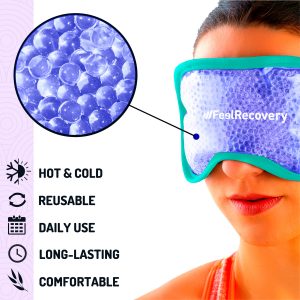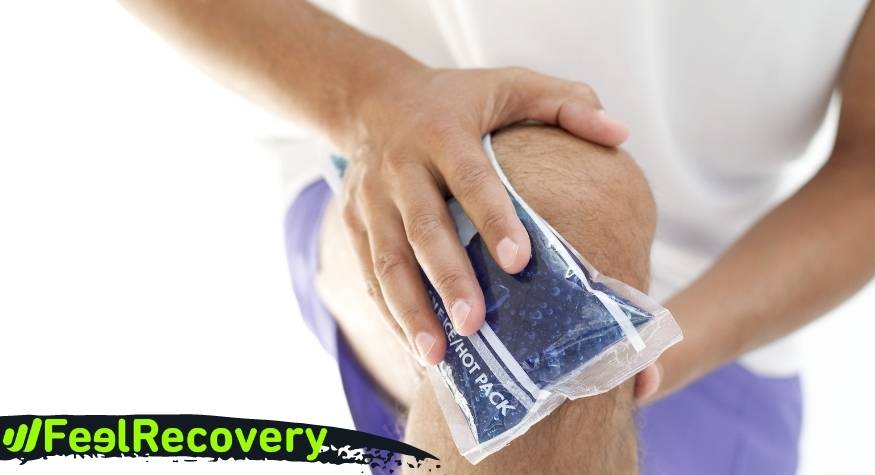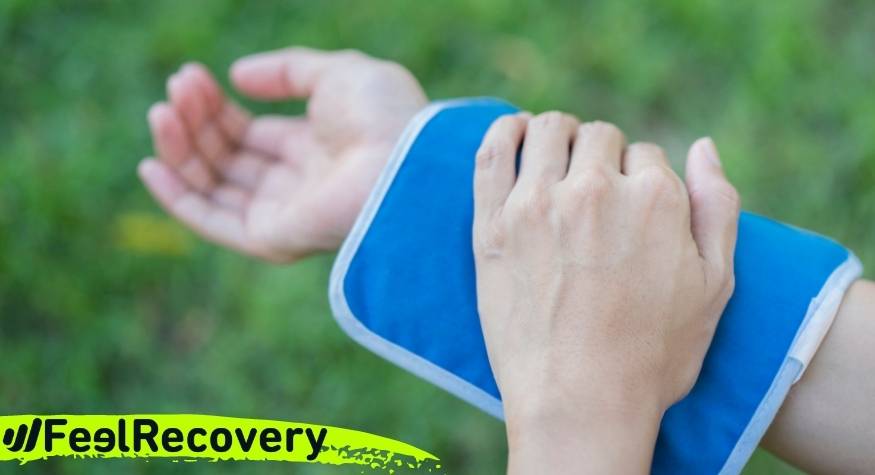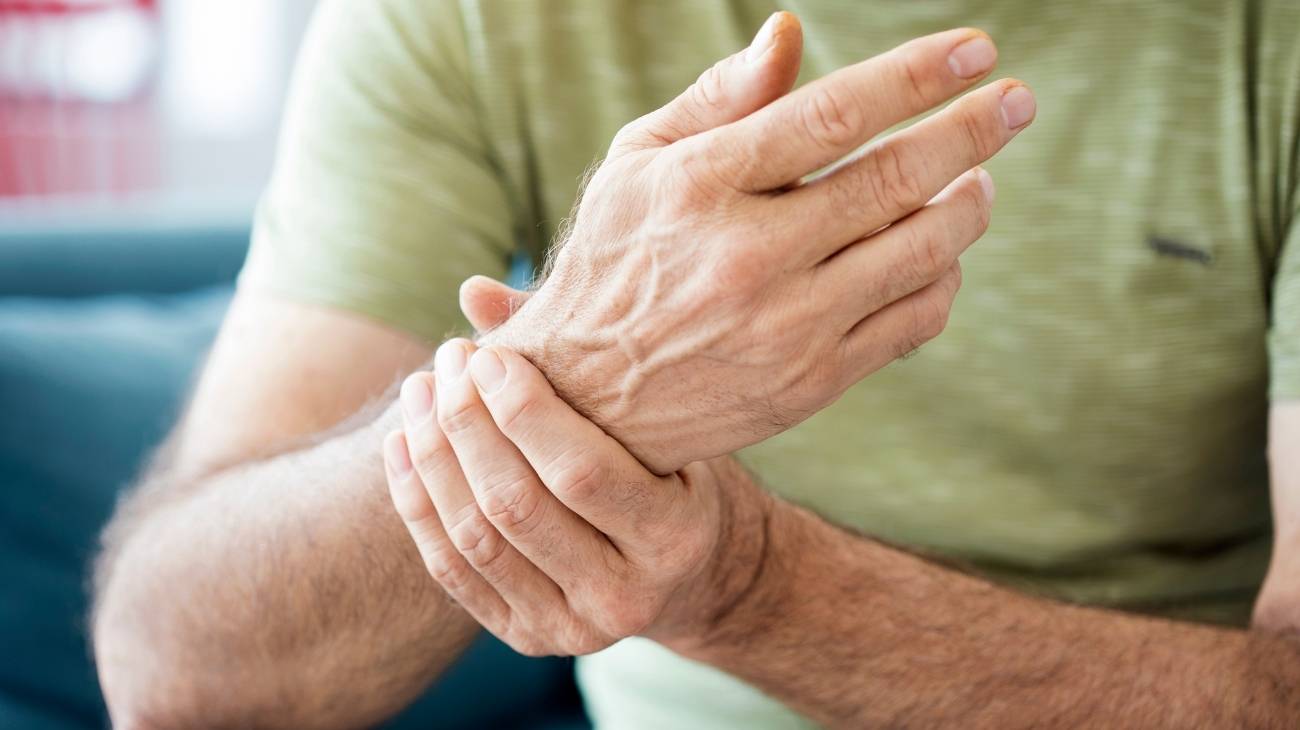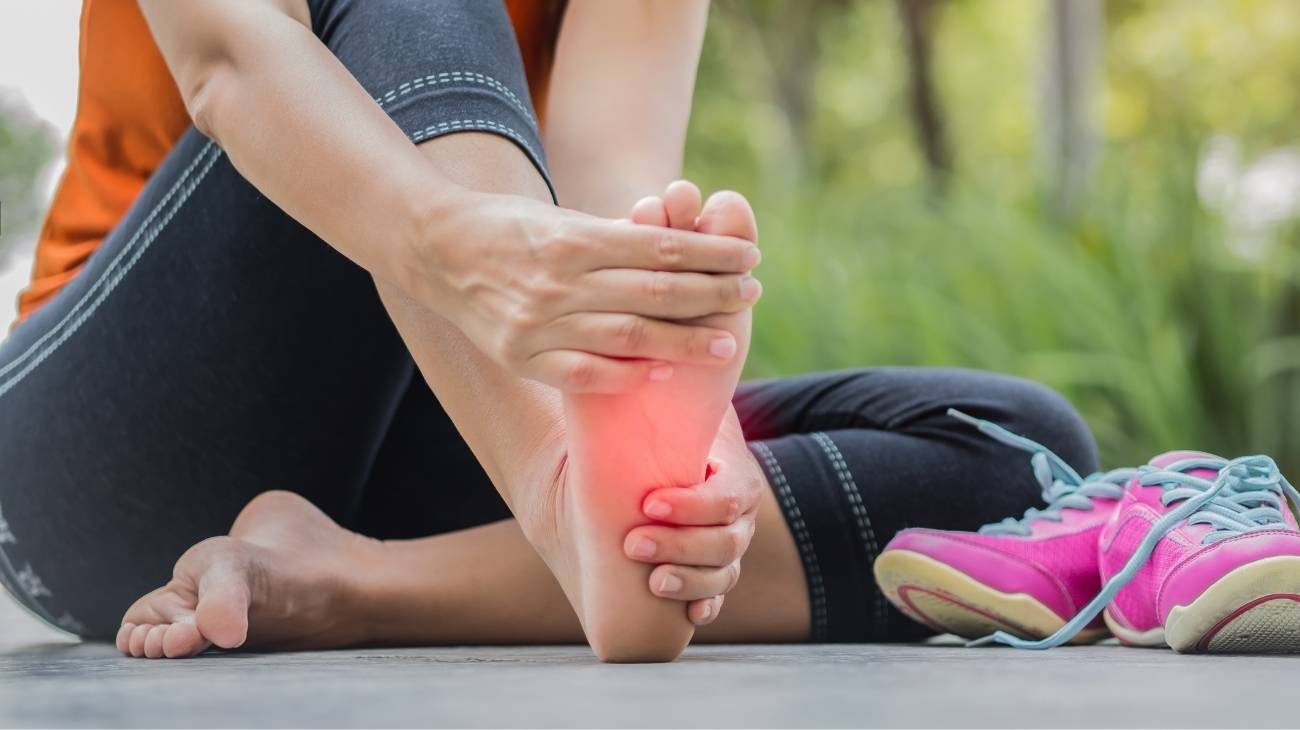Using hot and cold gel packs to relieve tendon pain and swelling from tendonitis is very effective within the first 3 days. Thanks to this cold therapy you will be able to control the pain and inflammation of the injured tendon.
However, before applying this home remedy it is important that you know the causes and origin of the pain and swelling of the tendons so that you do not repeat it. Also, we will talk about the advantages of applying cold to the injured area and how to do it correctly. Let's go there!
What are the causes and origin of tendon pain and swelling due to tendonitis?
The tendon is a band of fibrous tissue that connects the muscle to the bone, transmitting force and action on the muscle. The origin of tendonitis is the inflammation of a tendon, generating acute pain in or around it.
This condition generates pain and sensitivity outside the joint as a result of the inflammation and irritation of the tendon. Generally, this inflammation is produced by the flexion, stretching and excessive torsion of the tendon, generating traumatic injuries.
Generally, these damages improve around 2 to 4 weeks. However, in most cases it becomes a chronic problem due to continuous use of the joint, taking up to 6 weeks to heal.
Among the most common manifestations of tendinitis we have the Achilles tendinopathy of the ankle which is very present in runners. Also, tendinitis of the rotator cuff of the shoulder, lateral epicondylitis or tennis elbow, golfer's elbow, pitcher's shoulder, swimmer's shoulder and jumper's knee.
To help you understand this, we'll now talk about what causes tendonitis:
- Overloading any physical activity: This situation generates chronic degenerative changes in the tendons.
- Sporadic exercise: Weekend athletes who exercise sporadically often develop tendon pain.
- Repetitive stress: The most common cause of developing tendonitis from using the same joints in the same movements, generating a supervening injury. Some sports that require this type of effort are Basketball, Bowling, Golf, Tennis, Running, Swimming and Baseball.
- Bad working conditions and other situations: Some office jobs and other situations that demand repetitive movements, uncomfortable positions, reaching places above the head, vibrations, among other bad conditions could cause damage to the tendons. Some of them from using inadequate machinery and equipment, old shoes, among others.
- Widespread diseases (systemic): Diabetes, gout, psoriasis, thyroid diseases, rheumatoid arthritis, among other pathologies could trigger tendon degeneration.
- Age: Ageing brings with it a loss of elasticity, thus increasing vulnerability to tendon injuries.
- Reaction to some drugs: As a side effect of some treatment it could generate loss of elasticity and, consequently, greater vulnerability to injuries.
- Legs of different length: Those born with this condition require greater physical effort when walking, which could generate a wear and tear on the tendon.
Bestseller
-
Gel Eye Mask for Puffy Eyes (Gold/Black)
$11.95 -
Gel Eye Mask for Puffy Eyes (Orange/Pink)
$11.95 -
Gel Eye Mask for Puffy Eyes (Purple/Turquoise)
$11.95 -
Ice Pack for Foot - Cold Therapy Socks (Black)
$24.95 -
Ice Pack for Foot - Cold Therapy Socks (Green)
$24.95 -
Ice Pack for Foot - Cold Therapy Socks (Pink)
$24.95
What are the advantages of applying cold to reduce tendonitis pain?
Applying cold to reduce pain and inflammation from tendinitis is one of the most effective natural treatments for stretching and strengthening muscle and tendon.
Therefore, we want to talk to you about the many advantages of using cold therapy to treat tendon inflammation:
- Applying cold to the area affected by tendonitis increases the natural power of recovery from the injury. It should be used immediately to treat new injuries or soft tissue damage. In this way, the process of tissue damage is slowed down and swelling is reduced.
- In the face of pain, the cold acts as a numbing agent for the nerves in and around the hamstrings, reducing the pain.
- Hence, it acts as a natural and organic analgesic that treats the pain right at the origin of the injury.
- It minimizes long-term recovery time, and allows timely incorporation into daily activities.
- It reduces the possibility of a relapse into the next tendon injury.
- Decreases the chance of long-term tendinitis becoming chronic.
- You can control your treatment and healing at home.
- Minimizes the cost of anti-inflammatory drugs (pills, injections, hospital visits, among others).
- It is a proven and effective method of healing that has been used for centuries to control pain and inflammation from tendinitis.
- A 100% natural, effective and very economical alternative that you can apply yourself.
How to use cold gel packs and reduce inflammation from joint tendonitis?
In case of a tendinitis injury, cold gel pads are an excellent option if applied during the first 72 hours of pain and inflammation. The injured area will be numbed, tissue damage is minimized, and pain and tenderness are relieved. In addition, the blood vessels will contract, causing the swelling and inflammation to decrease.
However, it's important to know how to correctly apply cold gel packs to treat joint tendinitis, and then we'll tell you:
- Freeze the ice gel packs in the freezer or refrigerator for at least 2 hours.
- Once it has the right temperature, place it directly on the injured area. You won't have to worry about using a cloth or fabric to avoid direct contact with the skin, as our products include a pleasant cover to touch.
- The application time for the cold should be limited to 15-20 minutes. Sessions can be done every 4 to 6 hours for 3 consecutive days.
- Supervise the injured area every 5 minutes while in contact with the cold to avoid damage to the skin.
- Once the session is over, the cold gel pack should be returned to the refrigerator or freezer so that it acquires the appropriate temperature to be used again.
- After these 3 days of the injury it is recommended to apply heat, as it offers a greater benefit to the pain and inflammation in chronic tendinitis. Especially if the tissue is already tense and constricted, where the cold will only generate more tension during movement. Cold is also not indicated in cases of cramps or spasms, or people with Raynaud's syndrome, as it will increase the pain.
- Also, it is recommended to combine the compresses filled with cold gel with rest. This means that movement of the tendon should be avoided for at least 3 days. This includes activities that generate physical stress such as heavy lifting, twisting or holding on tightly or playing sports.
- Using orthopaedic support such as knee pads, ankle pads, crutches, slings will help protect the inflamed tendon to minimize physical strain. If you opt for bandages, they have a special design that will adapt to any part of the body and you can take them with you anywhere.
- In the chronic phase it is recommended to combine it with rehabilitation exercises. These should be done with rest between stretching and exercise.





